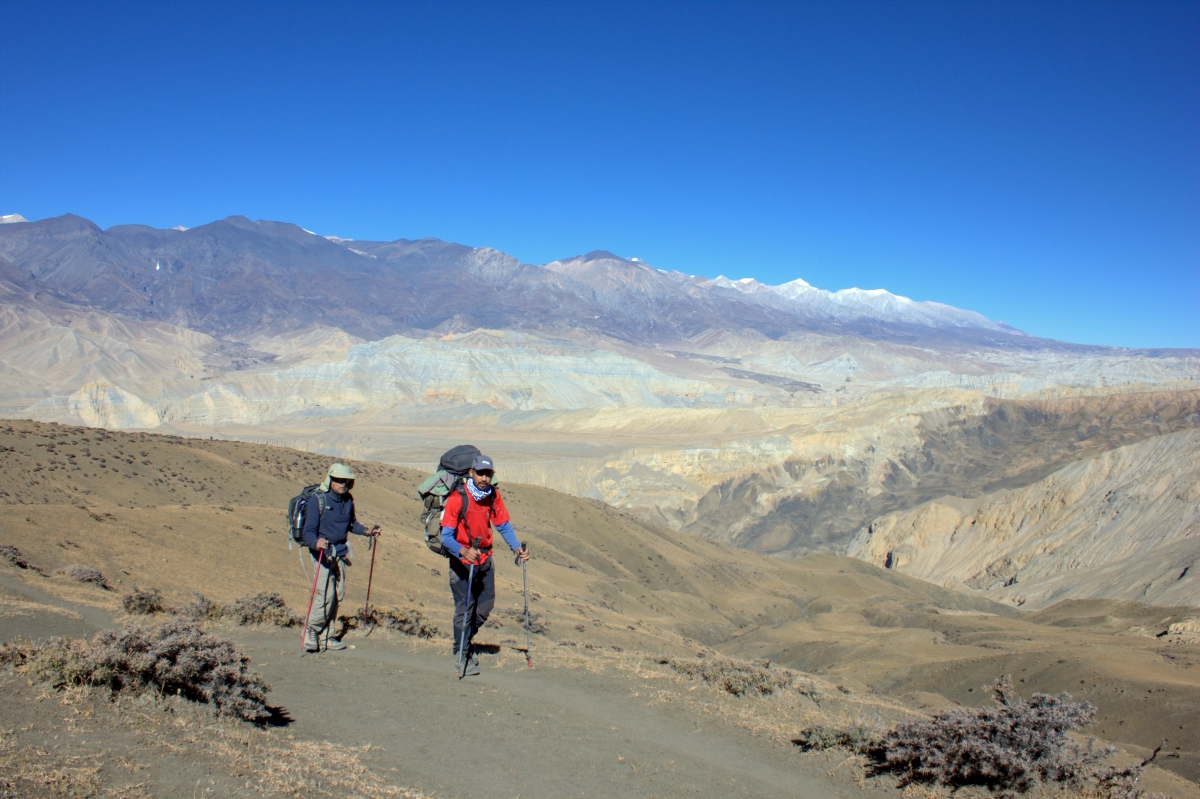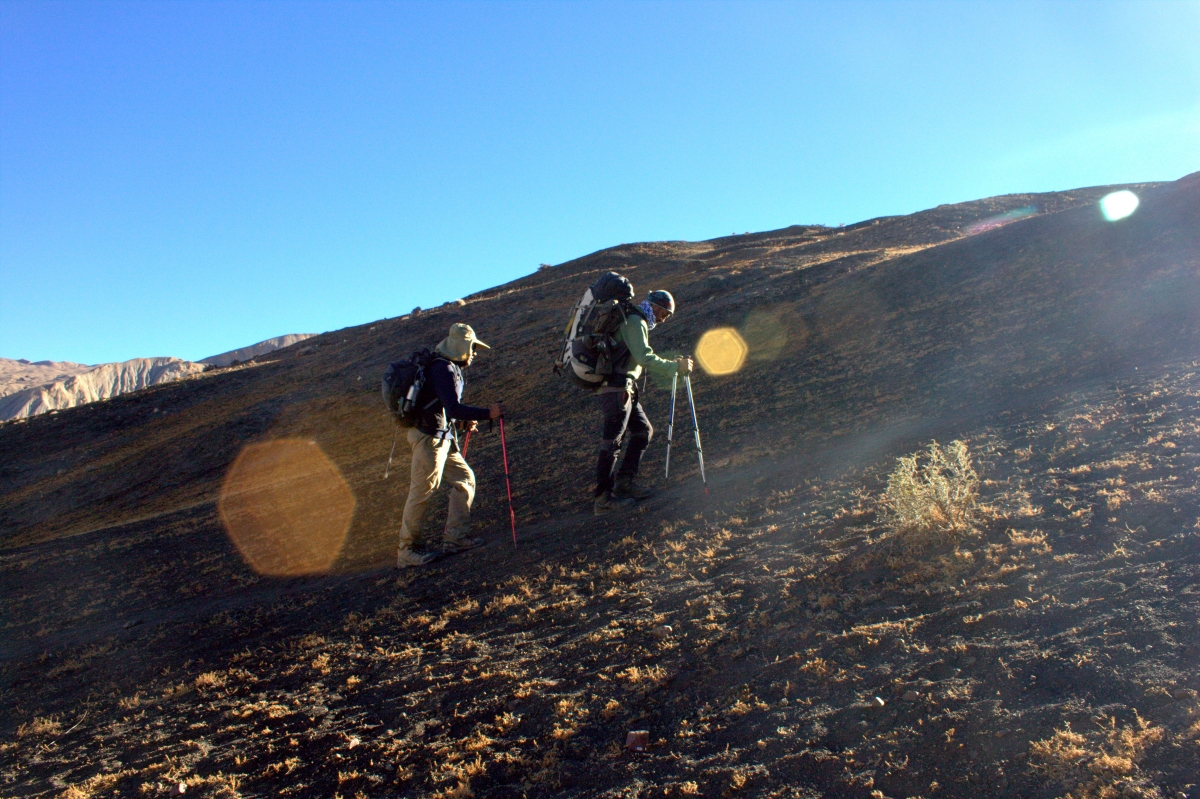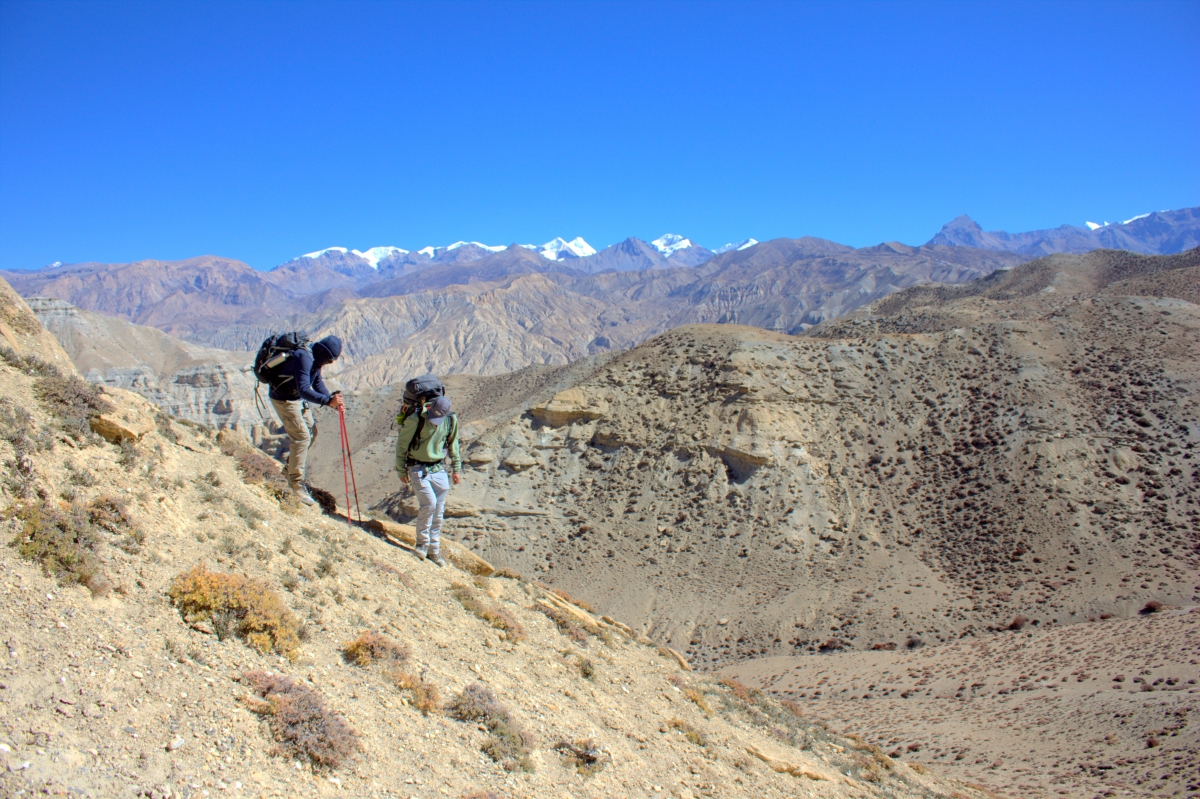WhiteMagic Adventure Blog
Using your trekking poles effectively -
Using your trekking poles effectively -
Hiking poles are very useful tools in the outdoors and help in many ways while on a trek. They act as two extra points of contact for you while walking, thus helping you balance in tricky sections and also help distribute your weight, reducing the load off your knees and the legs. If you use them effectively it is like walking on all fours instead of just the two limbs. Over long durations, they make you efficient and help conserve energy which can make a huge difference to your overall trek experience. And in long term, help keep your lower body joins healthy and injury free.
To get the best out of your poles, it's good we understand the right way to use them. So let us discuss a few simple but important aspects about how to use your poles effectively.
1) Length of the poles - This is the most basic aspect everyone should know about the usage of trekking poles. The poles are designed to be adjusted according to your height and the terrain on which you are using it. Generally the height of the poles should come to your waist/ hip level so when you are holding them your elbow makes a 90 degree angle +/- 10 degrees while moving. At this angle you would be able to use your upper body muscles effectively and comfortably propel yourself forward. Since poles are adjustable it is good idea to mark this height on your poles so you can quickly set them up.

2) Alternate movements - While hiking with trekking poles, you need to work like a 4 legged mammal. With each step you need to alternate your hand (read poles) and leg movements. When your right leg is ahead, your left pole goes along with it and vice versa. This is easy to get and is the most efficient way to use poles and helps greatly in getting your balance right and achieving a nice rhythm which is oh so important on long and tough days.
3) Adjusting the poles to varying gradient - Imagine yourself standing on a steep mountain slope with your poles. Now if you face the slope the ground would be quite close to you and if you face away from the slope the ground would be much further away. This would help you understand that while climbing uphill your poles need to be short and while going downhill, you would need to make them longer. The steeper the slope the longer/ shorter the length of the pole should be. Again the angle of your elbow is a great yardstick to help you adjust the size of your poles. As you know your elbow angle while holding the stick should be 90 degrees +/- 10 degrees while moving.

Notice the alternate movements, the height of the poles and the elbow angles.
If the elbow angle is too oblique, it's an indicator that you are doing it wrong. Maintaining the position is very important to make the poles useful or else you would be putting too much pressure on your upper body and not distributing your body weight across 4 points, hence negating all the benefits of using the poles.

While going down always extend your poles according to how steep the terrain is. Transfer the weight gradually on the poles before you step down.
Following these simple techniques can be very useful on a hike and can sometimes be the difference between reaching the campsite tired or being fresh in the evening to take a walk to watch a beautiful sunset and recover for the next day's hike. So use your poles to good effect and utilize your energy more efficiently to have your best time in the mountains.

Comments
Nice!
Nice!
Add new comment